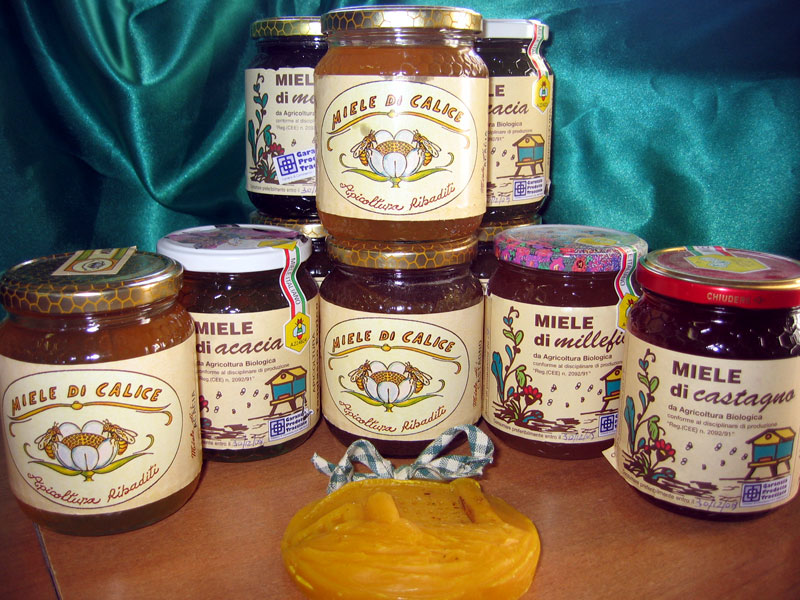Parco Naturale Regionale di Montemarcello-Magra-Vara
www.parcomagra.itHoney of Liguria
Features: Fruit of the tireless bees, honey is one of the most genuine foods, since it does need no treatments, either to produce or to preserve it. Local honeys, produced from the nectar of the flora of our inland, are chestnut honey, acacia honey, heath honey, strawberry tree honey, and mixed flower honey. The quality of honey varies according to the flora used by bees. Acacia honey has a light straw yellow color, chestnut honey has an amber color, mixed flower honey goes from light to dark colors according to the presence of honeydew. Also the taste varies: for instance, chestnut honey is more bitter than acacia or mixed flower honey.
Production Area: All the inland of Liguria
Curiosities: In the past, in order to protect bees from wind, cold or heat, the local bee-keepers used empty chestnut tree trunks. It is rare today to see in the countryside these ancient shelters, since if you want to carry out a rational bee-keeping activity, it is necessary to use modern beehives with removable frames. There are different geographical breeds of Apis mellifica: in Italy we have the yellow honeybee (Apis mellifica ligustica Spinola). Beekeepers are very interested today in the conservation of the local breeds that have adapted themselves to the region where they work; as a matter of fact, the introduction of foreign breeds gives an immediate production increase, but it leads in the long term to hybridization problems. Honey production dates back to the Middle Ages and honey has been used since ancient times in sacred rites as a symbol of purification. At the time of the Romans, it was used as a classical dressing and to sweeten wine if it was sour.
Preparation: Honey is extracted from the beehive with the smoking-out method. The practice consists of producing smoke near the beehive, so that bees go down to the lower part of the beehive moving their wings and giving the operator the possibility to extract the frames with honey. Once extracted from the beehives, the frames are uncapped with a special tool similar to a knife and placed in an extraction machine working like a centrifuge (honey extraction machine). Honey is then filtered, put to settle, and put into jars. The empty honeycombs provide the wax with which new molds will be built. The product is promoted during trade fairs and festivals, as well as during local markets.






